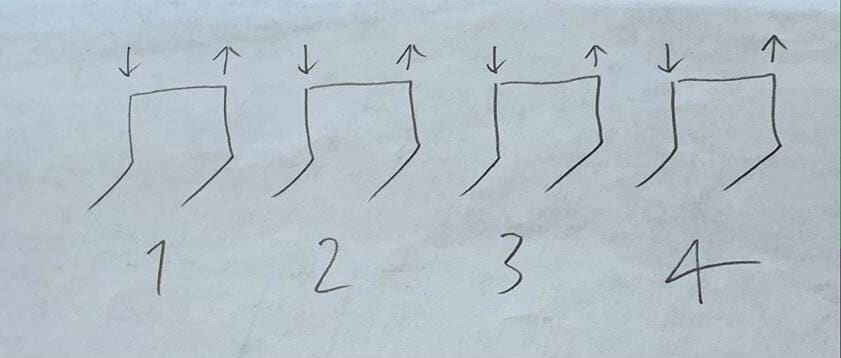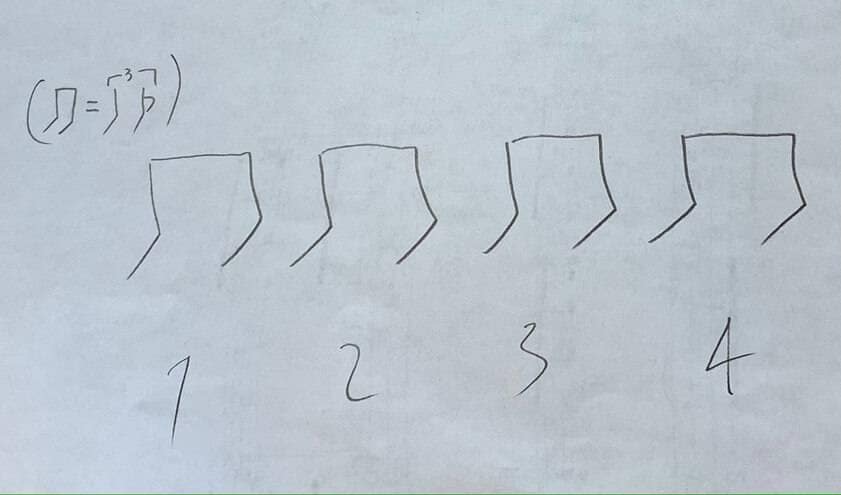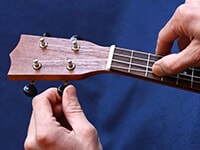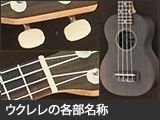Hello, Conservario here.
There is a rhythm also known as swing or shuffle.
Many of you may have heard of it and may have played it before.
It sounds simple, but it is a very deep rhythm called swing.
Let's master it and broaden the range of your playing.
What is swing?
I'll use rhythm notation to explain.

You can use any chord you like.
Since we want to concentrate on the right hand rhythm, play something as simple as possible.
I recommend chords such as C and Am, which can be held with only one finger of the left hand.
Now, after holding the chord, the right hand should play down and up,
Dadadadadadada
8 times.
You can put down either the index finger or thumb.
I think this is the way I always play.
This simple, even rhythm of eight “dadada-s” is called a “straight” rhythm.
So far, so good, right?
Now, let's finally try to play the “swing” rhythm.

After doing the down stroke, the right hand waits a little lower and then does the up stroke.
Here’s the rhythm is written in syllables,
Ta--kata--kata--kata--kata
The rhythm is like this.
It is like a slight extension of the note played on the downstroke.
This is the basic rhythm of swing.
When I say that the rhythm is “springy,” I’m referring to a rhythm like swing.
Some people describe swing as a rhythm in which the middle of the triplet is removed.
A triplet is three notes on one beat.
takata takata takata takata
is a triplet.
If you remove the “ka” in the middle of such a triplet, you get
ta-ta ta--ta ta--ta ta--ta
The result is the same rhythm as swing.
Personally, I avoid explaining what a triplet is when I explain swing.
The result is the same kind of rhythm, but I prefer not to think of rhythmic practice in terms of a combination of numbers.
First there is the music or tune, and then there is the rhythm.
If you think or play only rhythm with a combination of numbers, you will go further away from the music.
Therefore, when practicing swing, I recommend that you start by listening to a swing song.
There are many songs that I recommend, but this column is mainly about playing them, so I will introduce some songs next time.
Finally, let's practice switching between straight and swing rhythms.

Alternate between the straight “Tatatatatatata” and the swinging “ta-kata-kata-kata-”.
If you can do it, play it while counting the rhythm aloud, one, two, three, four.
If you are not conscious of the rhythm and try to manage it only with the right hand movement, you will get confused.
Imagine yourself as if you are playing straight or swinging rhythms.
Be aware that if you continue this practice for a long time, some people will begin to play with a subtle swinging groove that sounds like a straight groove.
Switch rhythms in an exaggerated manner at first.
There is no need to speed up the tempo.
However, if the tempo is too slow, it will be difficult, so practice at a tempo that you are comfortable playing in.
Once you get used to it, start to add a metronome.
Without a metronome, you may not be bothered if your tempo slips a little, but if you practice with a metronome, even the slightest deviation will be noticeable.
If you get good at playing with the metronome, then you’re OK!
Try some chord changes and experiment with it.
■ To summarize
I have introduced what the swing rhythm is and how to practice swing.
This swing rhythm is a very well-known rhythm that has appeared in various types of music around the world for quite some time.
It is used in classic rock and roll, blues, jazz, folk music, and pop music.
The “ta-kata-kata-” rhythm often heard in Japanese festivals and Japanese-style music also has a swing-like groove to it, don't you think?
There has long been a debate over whether to call this music “swing” or not, but I think it is similar.
Please pay attention to the music you listen to in your daily life and listen to see if you can find this “swing” rhythm in it.
If you start noticing things you didn't notice before, it's a sign that your musicality has improved.
Listen, play, and be aware of the differences straight-on.
If you continue to do this, you will be able to incorporate a swing groove into your playing.
Thank you for reading to the end.
The “sound & person” column is made up of contributions from you.
For details about contributing, click here.











![[Enjoy the Ukulele Even More!] Listen to Skilled Musicians Play](/contents/uploads/thumbs/5/2022/3/20220328_5_17282_1.jpg)
![[Enjoy the Ukulele Even More!] Are You Practicing A Lot, But Still Can’t Get the Chords to Sound Good?](/contents/uploads/thumbs/5/2022/3/20220328_5_17277_1.jpg)
![[Enjoy the Ukulele Even More!] Mastering Downstrokes and Upstrokes](/contents/uploads/thumbs/5/2022/3/20220328_5_17270_1.jpg)
![[Enjoy the Ukulele Even More!] What to Do When Your Favorite Song Seems Too Difficult](/contents/uploads/thumbs/5/2022/3/20220328_5_17261_1.jpg)
![[Enjoy the Ukulele Even More!] How to Make the Most of Instructional Books and Lesson Videos](/contents/uploads/thumbs/5/2022/3/20220325_5_17245_1.jpg)
![[Enjoy the Ukulele Even More!] Hacks to Keep Your Strings Going Longer](/contents/uploads/thumbs/5/2022/3/20220317_5_17094_1.jpg)
 ウクレレのチューニング方法
ウクレレのチューニング方法
 ウクレレの各部名称
ウクレレの各部名称
 ウクレレの種類
ウクレレの種類
 ウクレレスタートガイド
ウクレレスタートガイド
 めちゃラク!ギター講座
めちゃラク!ギター講座
 ウクレレ初心者講座
ウクレレ初心者講座















